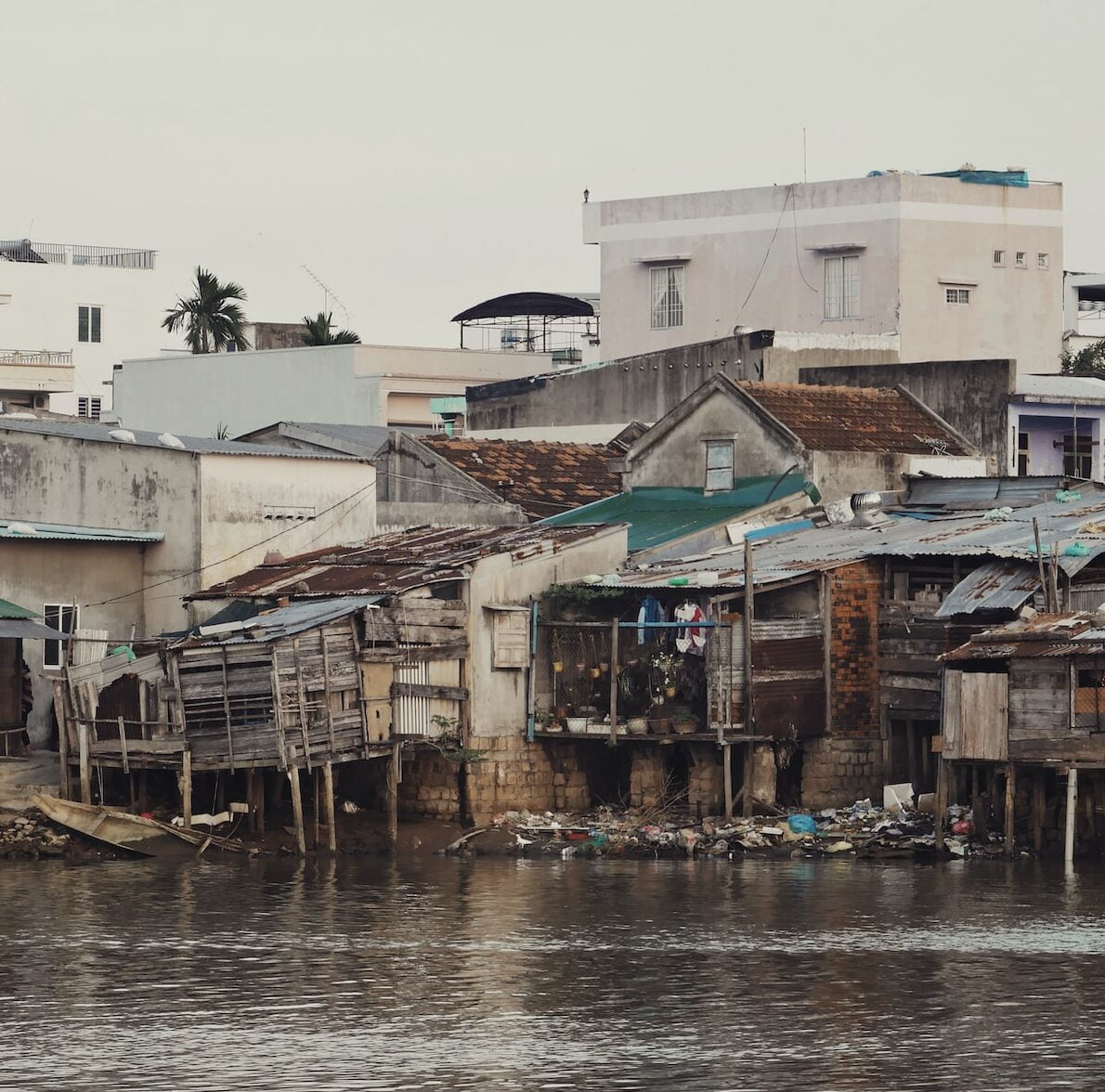
Climate Crisis And Poverty: Why The Impact Is Not Shared Equally
by Olivia Draycott
Despite being a worldwide catastrophe, not everyone is equally impacted by the climate crisis. Both rising sea levels and temperature increases pose risks to the planet; however, the latter has a greater impact on those who live in poorer arid regions than on those who dwell in recently built cities [1]. Low-income countries [LIC] are more affected by inadequate waste management and resource exploitation than what is experienced in high-income countries [HIC], as LIC’s often do not have suitable infrastructure available or the economic clout to engage in adequate, safe, and sustainable waste management facilities [2]. As a result of others’ environmental exploitation and mistreatment, the poor suffer disproportionately from the impacts of the climate crisis.
Additionally, people who live in poverty are more susceptible to the consequences of climatic risks and lack the adaptive abilities to reduce their exposure [3]. For example low-income families are more likely to reside in dangerous locations due to a lack of social mobility or the demise of a once-thriving sector, leaving them often exposed to the environmental consequences of climate change [3]. Apart from a lack of general education and climate combat knowledge, this is due to frequently being excluded from decision making processes and a lack of power.
An example of this disproportionate victimisation of the poor is visible in Mumbai. There the Indian government is building slum redevelopment shelters near petrochemical complexes and gas pipelines. This is being done instead of developing the sites in ‘more desirable locations’ due to the low cost of the development of the slum redevelopment shelters in ‘brown field’ (and that was previously used for industrial purposes, and may be contaminated in various manners) areas [4]. The Mahul city’s authority, Brihanmumbai Municipal Corporation (BMC), has done little to mitigate the drastic increase of Toluene levels within the city [5] . Toluene is a chemical substance whose release to the atmosphere is the largest among the pollutant release and transfer registers (PRTR) chemicals and is regarded as a major air pollutant, alongside posing moderate chronic (long-term) toxicity to aquatic life [6]. Despite this, the BMC claim that there is nothing wrong with the conditions of the current shelters and that citizens are looking for an issue to raise’, despite 86.6% of residents suffering from eye irritations and 84.5% of residents suffering from regular periods of shortness of breath after being relocated to the city, and increased levels of Toluene in the surrounding area [5].
Consequently, it is important to tackle the issue of the poor’s climate victimisation by addressing the current attitudes of authoritative figures and citizens in HIC’s. This will include investigating the failed attempts to reduce environmental harm by investment in sustainable structures, that disproportionately neglect poorer citizens by failing to take into account their access to these infrastructures [4]. However, change can be made, and the impacts can be lessened by expanding the resilience action plans that the communities have in place to combat environmental harms [7]. One strategy suggested by the World Resources Institute to the United Nations Department of Economic and Social Affairs, Division of Social Policy and Development, was to include poor and socially excluded groups in the decision-making and implement a climate mitigation strategy [7]. This, if implemented successfully, will enable these communities to engage in adaptive activities to mitigate the impact of climate change directly, through cost effective and sustainable means, which would otherwise be inaccessible to them.
It is possible to lessen the detrimental consequences of the climate crisis on those in Lower-Income settings. When the effects of inequality are considered regarding the impact of the climate crisis, including planning, creating, and implementing policies, the burden of climate change will not be unduly weighted on one party [8]. As a result, climate change mitigation strategies should have a pro-poor stance that, in the best-case scenario, can also decrease the inequality that already exists.
References:
[1] Climate Change is an Increasing Threat to Africa (2020) UNFCCC. int. Available at: https://unfccc.int/news/climate-change-is-an-increasing-threat-to-africa (Accessed: 1 November 2022).[2] Solid Waste Management (2022) WorldBank.Org. Available at: https://www.worldbank.org/en/topic/urbandevelopment/brief/solid-waste-management (Accessed: 1 November 2022)
[3] Stephen Hallegatte et al. (2016) Shock Waves; Managing the Impacts of Climate Change on Poverty, WorldBank.Org. Available at: https://openknowledge.worldbank.org/bitstream/handle/10986/22787/9781464806735.pdf (Accessed 1 November 2022)
[4] R.N.Bhaskar (2021) Policy Watch, Slums 2: How slums distort normal economics in India, The Free Press Journal. Available at: https://www.freepressjournal.in/analysis/policy-watch-slums-2-how-slums-distort-normal-economics-in-India (Accessed 28 October 2022) https://www.freepressjournal.in/analysis/policy-watch-slums-2-how-slums-distort-normal-economics-in-India (Accessed 28 October 2022)
[5] Anjali Lukose (2015) KEM report points to high toluene levels in Chembur-Mahul belt , The Indian Express. Available at: https://indianexpress.com/article/cities/mumbai/kem-report-points-to-high-toluene-levels-in-chembur-mahul-belt/, (Accessed 25 October 2022).
[6] Kishimoto A, Cao H, Gamo M. Assessment of exposure to and risk posed by toluene in Japanese residents: combining exposure from indoor and outdoor sources. Environ Sci. 2006;13(1):31-42
[7] Moushumi Chaudhury (2017) Strategies for reducing vulnerability and building resilience to environmental and natural disasters in developing countries, World Resources Institute Written for Expert Group Meeting on Strategies for Eradicating Poverty to Achieve Sustainable Development for All. Available At https://www.un.org/development/desa/dspd/wp-content/uploads/sites/22/2017/04/Moushumi-Chaudhury-Strategies-to-Reduce-Vulnerability-Paper_WRI_Final.pdf (Accessed 1 November 2022)
[8] Sanna Markkanen & Annela Anger-Kraavi (2019) Social impacts of climate change mitigation policies and their implications for inequality, Climate Policy, Taylor & Frances, Available at: https://www.tandfonline.com/action/showCitFormats?doi=10.1080%2F14693062.2019.1596873 (Accessed 1 November 2021)


